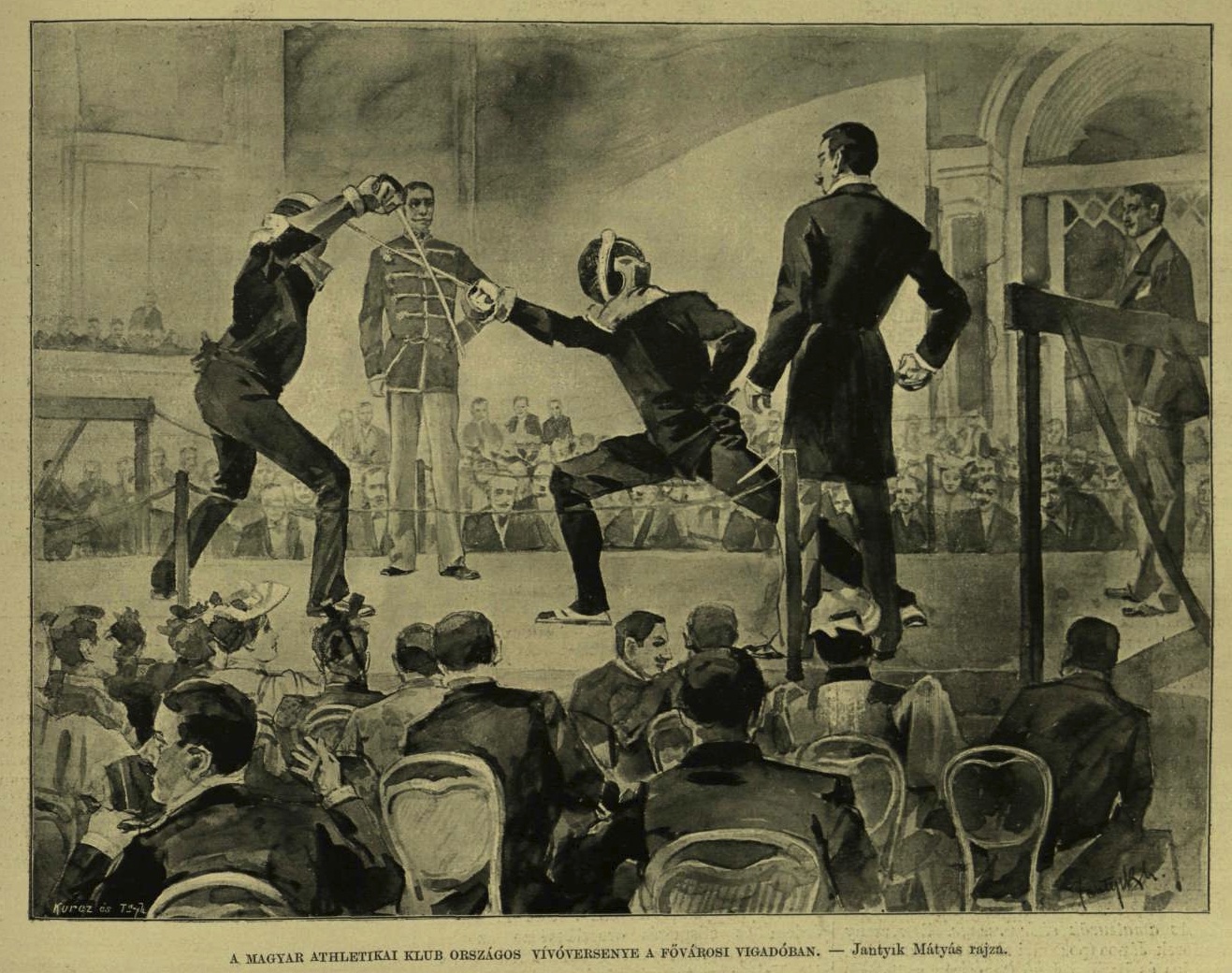Fencing competition and fencing match

An interesting article, allowing some insight into the debates and approach of the fencing world - and especially the situation of Hungarian sabre fencing sport in the XIX. century.
It appeared as part of the appendix of the book Hungarian Sabre Fencing as Female Physical Exercise by Norbert Sztrakay, 1895, Pátria.
The text is highly informative regarding the principles that formed fencing around that time, and I find it also useful for connecting the puzzles of modern HEMA to the very actual and alive disputes and outcomes of ages of the living history of fencing, that to us, might appear as parts of an amazing tradition.
Fencing existed as a form of dueling or combat, and also developed as a separate art and sport on its own right those days in Hungary - supported by the attempts to lessen the dangerous dueling incidents. If we look around only in Hungarian literature, we can find great number of articles, debates, treatises both on fencing and dueling, or rules and actual, daily problems connected to either of them, and realize how deeply this sport and art was planted in Hungarian national identity as well. Fencing was also an integral part of the military, and fencers on pistes were usually also soldiers.
The first paragraphs of the article talk about the underlying principles of certain, today obviously discernible approaches of tournament regulations.
The next, main topic of the text talks about a phenomenon that modern HEMA does not encounter in its original form at the moment, but has always been an essential part of fencing - the approach to and authority of fencing masters, the profession of the most renowned coaches, who carried the traditions and science of fencing through history, and their relations to their students and to the world.
I have to say, much has not changed, 'there is no new thing under the Sun' - of course, if we are talking about the principles and the essence of fencing, most central principles of coaching and the unique nature of fencers. As I understand it now, the outward things and many characteristics of a living tradition are always influenced by the actual age, trends, preferences in behavior, politics and diplomacy, rules and weapon characteristics
The translation is incomplete at the moment, the missing part is a letter about the allegedly most sadly ridiculous state of the organizational background and 'disgrace' of Hungarian fencing those days…
Full article translated by Nagy Krisztina.
